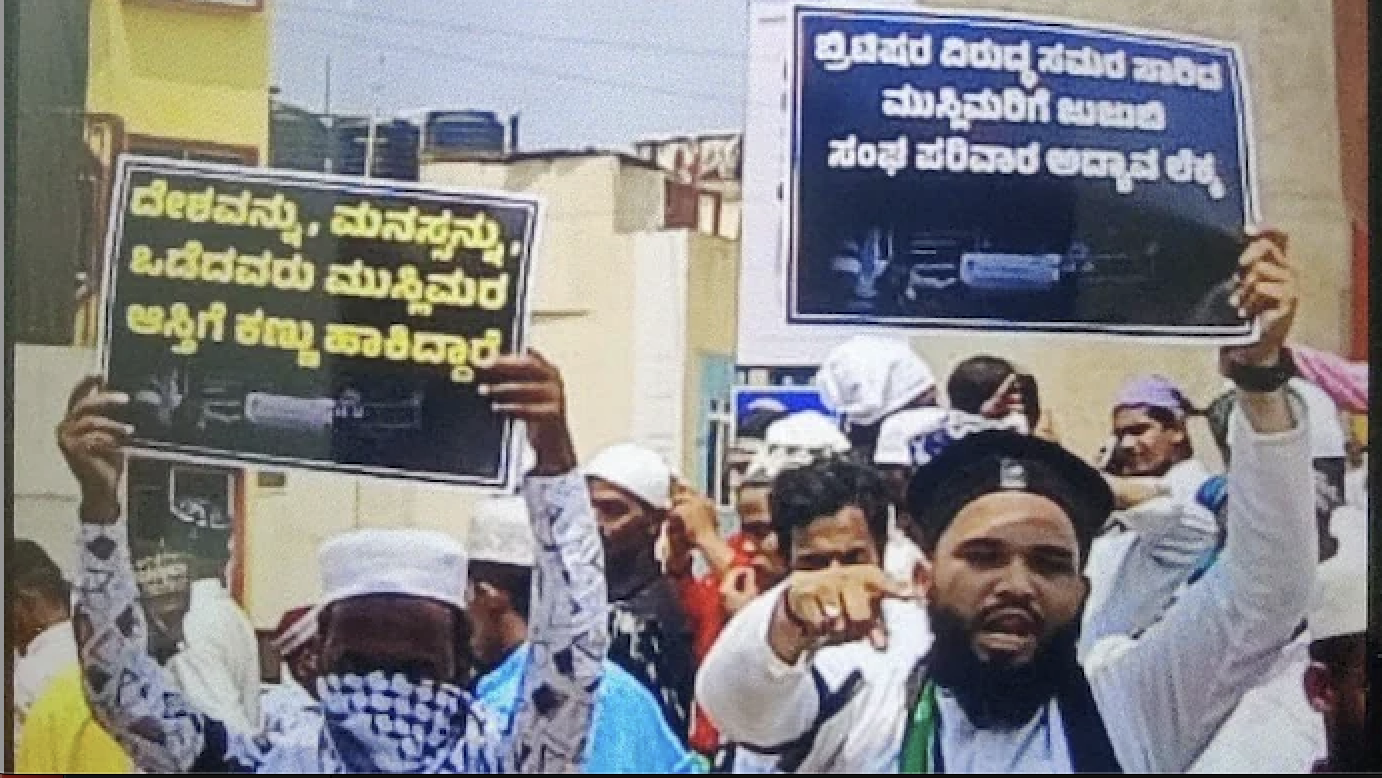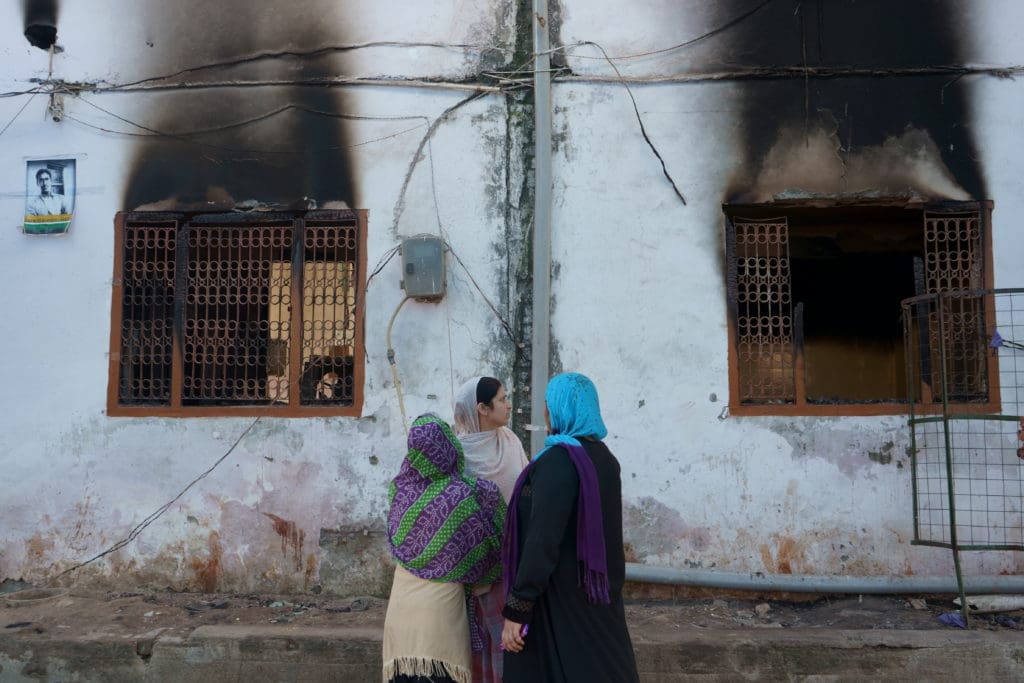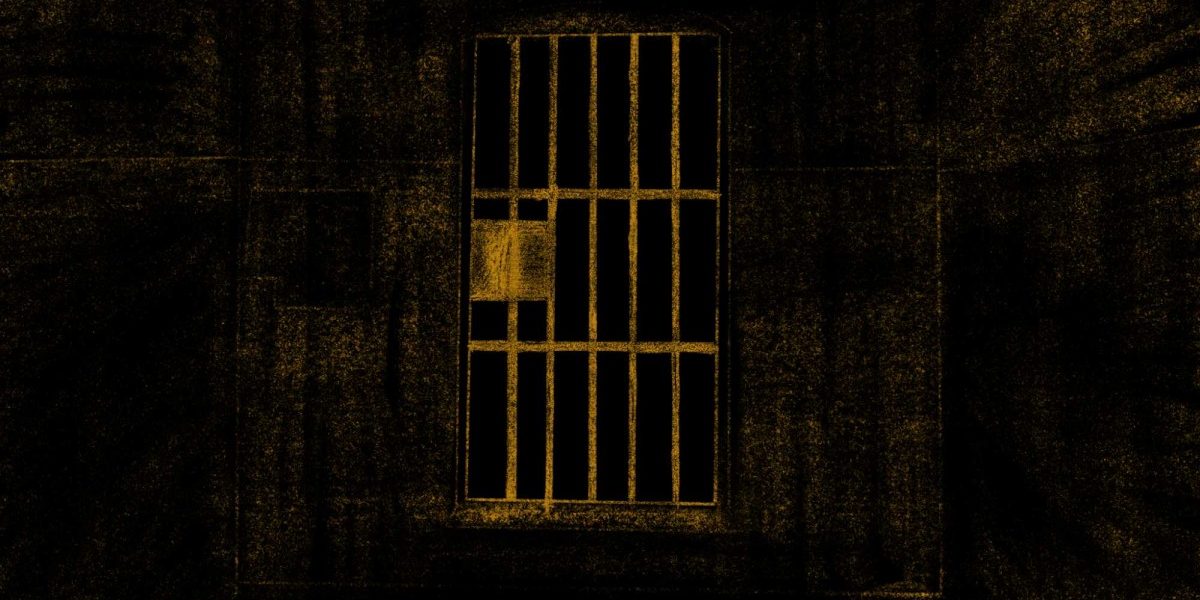
The Narendra Modi government’s move into reverse gear on the farm laws was driven by its own supreme self-interest encompassing a raft of objectives which includes electoral considerations – especially winning the crucial 2024 general election – but not just confined to them. Clearly, he was not going to let his desire to capture the farming sector and please his corporate supporters and funders get the better of his desire to win a third term in office, but many other factors were at play as well and in the post-announcement, the media did a creditable job of trying to unearth what these may be. Suffice it to say that the rock-like stance of Narendra Modi conveyed through innumerable public meetings and television addresses that these “farm reforms will give farmers new markets, access to technology and help bring investments in agriculture that will benefit them”, stood shattered.
Particularly pertinent are the voices of mild dissent that have emerged from the rightwing Hindutva constituency, perhaps best articulated by R. Jagannathan, editorial director of Swarajya magazine in the Times of India:
“Narendra Modi does not usually back off when confronted with difficult political challenges, but he has done so this time. Whether this will reduce him to a lameduck for the remaining half of his second term or not remains to be seen, but there is little doubt that his political capital has shrunk.”
This is possibly the harshest pronouncement this writer has made on the prime minister over these seven years, and could be the harbinger of other notes of dissent from within Modi’s political constituency.
That ‘Big Media’ is disappointed in this development is best captured in the raft of editorials in the country’s leading newspapers. All of them are basically premised on the neo-liberal argument that the marketisation of the agriculture sector that the farm laws engendered is good for the country and its farmers although there were mild disagreements over the manner in which the prime minister sought to push them through.
Big Television, with its antenna permanently fixed in the direction of the PMO, may have been caught on the back foot. Having thrown all independent coverage on the farmers’ agitation to the winds over these last 15 months, the media now had to face the ignominy of wiping the egg off their faces. But long years of opportunism have honed their skills of picking up the broken shards of their narrative and piecing it together again. It was amusing how every major news channel claimed that they knew that a “solution” was on the anvil and that they were the first with the news. They were also quick to hail the prime minister’s wisdom, sense of timing given the auspiciousness of Gurupurab, and his man-of-the-soil image.
It unearthed untiringly those tired clichés deployed time and again these seven years that this “surgical strike” on the farm laws and constituted essentially a “masterstroke”. Studio “experts” were soon observing how the friction between government and farmers had evaporated with this step, how the BJP now stood to gain in Punjab, and how the opposition was tying itself in knots politicising the issue.
Yet, let us consider briefly, the consistently negative, even vituperative, campaign that Big Media had conducted on this agitation, much as it had in the earlier pan-India agitation against the anti-Citizenship Amendment Act. In fact, what must not be forgotten is that it was the courage of largely unlettered women of Shaheen Bagh that demonstrated to the farmers the power of non-violent protest that may have taken a toll on their bodies but never on their courage. The Wire carries a useful compendium of the different ways in which BJP leaders attempted to tar them (‘Did Modi Repeal Farm Laws Out of ‘Respect’? Here’s 12 Times BJP Leaders Tried to Discredit the Protests’, November 19). It is striking how each one of the insinuations and slurs that emerged from the BJP’s political universe made it seamlessly into Big Media coverage, through reporters, editors, anchors, commentators, and studio guests. The charge that the movement was being run by “AK-47 wielding Khalistani terrorists” was constantly deployed by both the BJP and Big Media in their bid to tarnish the movement in the eyes of the country. As recently as last month, after the murderous Lakhimpur Kheri mowing down of farmer protestors, you had Zee News claiming without furnishing proof that the Babbar Khalsa was behind the agitation.
Big Media, while rushing to condemn the protestors for stepping out of line during the Republic Day march, rarely found words of commendation for the admirable restraint shown by the great body of protestors who sat day after day for over a year suffering the entire gamut of the seasons, from winter damp to scorching summer heat to mosquito-marked monsoon days. It is rare to see a movement that evokes such commitment from followers that entire villages emptied out in support and which still maintained relative peace even in the face of grave provocation and police intimidation. Yet Big Media and their political handlers, instead of understanding these personal sacrifices, never lost an opportunity to accuse the movement of disrupting traffic, holding the Capital hostage, spreading anarchy, in framing that the BJP IT Cell would have them adopt.
Who can forget Union minister of state for external affairs Meenakshi Lekhi’s words that these protestors were not farmers they are mawalis (thugs). She may have apologised for the usage but there were many in her party who carried on with the abuse and made it into media attention. In fact, it was the prime minister himself who often led the charge, smearing the farmers and in fact every Indian who chooses to stand up for the right to speak and act, as andolan jeevi (those who live off agitations) (‘How the Farmers’ Movement Brought the Modi Government to its Knees’, November 19). This was the prime minister’s full statement made during this year’s Budget session:
“In the last few years, a new community has emerged: andolan jeevi. They can be seen in every agitation. We need to protect this country from such people, who are actually parjeevi (parasite)”.
An independent media may have found it in themselves to condemn the tone and tenor of this statement made in the context of a struggle of millions of farmers and peasants for a fair deal but went far beyond by targeting social activists who came out in large numbers in support of these protests. But the media did not do this.
When an estimated 750 protestors died during the course of the agitation, there were no words of commiseration from Big Media, nor were there observations on the difficult conditions in which the protests are taking place nor advice to the government on the need to handle the issue with urgency. Here too they seemed to have taken a cue from the likes of Haryana agriculture minister J.P. Dalal, who pronounced that “Yeh accident se nahi mare na, swecha se mare hain… (They did not die by accident. They died by their own will.)” Ironically, even when farmers were mowed down in Lakhimpur Kheri, the argument was made in the media that the protestors had no business being on the road in the first place and had it coming.
Farmer protestors had long recognised that Big Media was part and parcel of the Union government and never lost their basic suspicion of the “mic-wallahs” who came for soundbites, not to understand better their arguments but only to castigate them through their skewed reporting. Unfortunately, it was the reporters from these channels, not the suited-booted and bejewelled spinners in television studios, that bore the brunt of their ire and told to go back since they were from “godi media” (‘At Farmers’ Protest, Field Reporters of ‘Godi Media’ Channels Face the Heat’, December 9, 2020). Posters pouring scorn on media houses shackled to the same corporate interests that stood to gain enormously from the three farm laws were a fixture at every protest site.
In many ways, this moment – exposing a breakdown of trust between such a large section of civil society and journalists – is an extremely teachable one for the media. It demonstrates the consequences of discarding a central principle of credible journalism: independence. The question as always is will the lessons be learnt?
How do journalists handle these hard Pegasus times?
Bradley Hope, once the foreign correspondent for The National, based in Beirut and Cairo, and a Pulitzer finalist, makes extremely important observations about how the Pegasus issue impacts journalism today in an online discussion at the Asian College of Journalism, Chennai.
Today, the Indian government has weaponised surveillance tools like sophisticated spyware to keep a watch on civil society as the “new frontier of fourth-generation warfare” (‘With ED, CBI Ordinance, Centre Ups Its Game for ‘Fourth Gen Warfare’ Within Civil Society’, Nov 16). Journalists, let us never forget, comprise the praetorian guard of civil society, and their keeping a watch on their activities are very much part of this “fourth-generation warfare”.
So Hope’s observation that the time has come for journalists to “retrench from technology”, is extremely relevant. In other words, while they would need to get the best out of existing information technology, by allowing themselves to be accessible to their sources, they must make sure that they themselves work below the government’s radar, especially when undertaking sensitive investigations. As Hope puts it, the Pegasus matter is a “pertinent wake up call for journalism because never before have we been so vulnerable. The way this technology has become a powerful tool, you are leaving all the trails that you are trying to lose.”
So how do journalists “retrench from technology”? Hope has some suggestions, including the simple stratagem of leaving the phone behind while meeting important sources. He also adds that media organisations must become more involved in protecting their journalists in terms of the technology they use. As he puts it, “It is critical how organisations buy their equipment.” They could, for instance, two simple non-smartphones and provide their newsrooms with technology kits that secure them against surveillance, especially when sensitive investigations are being conducted.
Hope’s words come as a timely reminder that the trusty companion, our mobile phone, may not be so trustworthy, after all. The old way of carrying it wherever we go needs to be seriously reviewed.
Can someone answer this question?
I sometimes get nudged by tweet alerts like this one: “How many news orgs in India have at least drafted a policy to assure security and safety for their ‘on-duty’ staff? How many? If not, why? @pamelaphilipose @anitajo”.
I confess, I have little idea and would be really interested if someone could answer this question for me. My hunch is that as news organisations try and tighten their budgets given declining revenues, they are cutting back on even the basic security measures that existed earlier such as transportation for late-night drops back home. Given this, it is even less likely that news organisations in India are in any hurry to draft policies to protect their staff, despite the recent spate of assaults on media personnel.
International news institutions have considered and invested in this concern. According to the Reporters Without Borders (RSF), Reuters doesn’t allow anyone to undertake a potentially life-threatening assignment without the approval of a senior editor and the appropriate regional general manager. France’s Le Monde group has recruited an adviser specifically responsible for the prevention of risks during reporting assignments, and who helps journalists and senior editors weigh in on the news value of a story and the risks it entails. The BBC has also gone to great lengths in examining high-risk assignments, including sending staff to hostile areas, covert filming of dangerous groups and covering dangerous events such as terrorist attacks, natural and man-made disasters and pandemics. It has created a ‘High Risk’ team dedicated to assessing the risks associated with newsgathering activities and to help editors with planning and deployment. For every assignment classified as high risk, the BBC requires a detailed written assessment of the risks and the steps to take to mitigate these.
Readers write in…
Aryan Khan and undertrials
Mumbai-based Moulvi Shakeel Mohamed would like to share a mail he sent Uddhav Thackeray, chief minister of Maharashtra. The Wire has also written on the case (‘Aryan Khan and the Right Wing’s Disdain for Bollywood’s Portrayal of Progressive Ideals’, October 29): “The recent Aryan Khan V/s NCB V/s NCP battle has been an eye-opener vis-à-vis the procedural lapses, probable misuse of power, the legal muscle power and archaic system of procedure of receipt of bail order in a ‘letterbox’ with a closure timing comparing Arthur Road jail to a grocery shop, having crass regard for human rights and liberty. It also highlighted the human rights violation of an undertrial who in spite of bail had to spend 02 additional nights in the jail as ‘punishment’.”
“Hypothetically speaking, what would have happened if Aryan Khan was just another common man. Would he have still been languishing in jail for the rest of his life like many others still languishing in prison without any legal help? Crowding prisons with undertrials have taken a big toll on the government’s exchequer. As the legislative head of state in Maharashtra, we request you to suo motu seize the matter of undertrials, investigate/inquire and give deserving undertrials and their families the gift of freedom, which cannot be the monopoly of the family of Aryan Khan alone.”
Why silent on the other side?
Nishit Prajapati has a serious grouse with The Wire: “I have seen many news stories on your website on the anti-Muslim sentiments in the country. But it is silent about the other side of the story. When Muslims becomes regional majority, how Hindus suffer at the hands of Muslims remains uncovered. I hope you consider every injustice as worthy of reporting, and do not see a religious angle in injustice. I tried, and did not find any story in your portal, about the regional Muslim majority in Tamil Nadu forcefully not allowing religious procession of Hindus. In fact, the Madras high court reprimanded Muslims for not allowing the religious procession of Hindus.
Tripura govt should come under UAPA
Kabir Mustafi has a suggestion: The Editor’s Guild must make out a case for why UAPA charges should be filed again the Tripura government and state police for creating terror in the minds of journalists, lawyers and civil rights activists.
Interesting idea, the problem is that the Union government will have to file such an FIR which, of course, is an impossibility!
Story suggestions from readers
Readers occasionally write to us with story suggestions. Nitin Vishen, a regular reader of The Wire, writes in: “I have come to know that several National Institutes of Technology (NITs) have received a letter from the Ministry of Higher Education to admit a bunch of 75-100 students irrespective of their rank in JEE-Mains. If this information is true, such bypassing of the admission process to our premier institutes can undermine their reputation and credibility. I do not have the resources to investigate and report this. I request you to please look into this, and please report if you find this information is true.
Similarly, K. Govindan Nampoothiry, an RTI campaigner based in Kochi, wants us to follow up on a wild elephant attack which has claimed the lives of 585 people in 2019-20:
In the last seven years, a total of 3,310 people were killed due to wild elephant attacks in the country. The Union Ministry of Forest, Environment and Climate Change admitted this in response to an RTI application filed by me. Odisha registered maximum deaths, 589, during 2014-15 to 2020-21 (as per the data up to December 31, 2020). In West Bengal, 562 people were killed in man-wild elephant conflicts. It is followed by Assam (479), Chhattisgarh (413) and Jharkhand (480).
This story first appeared on thewire.in





